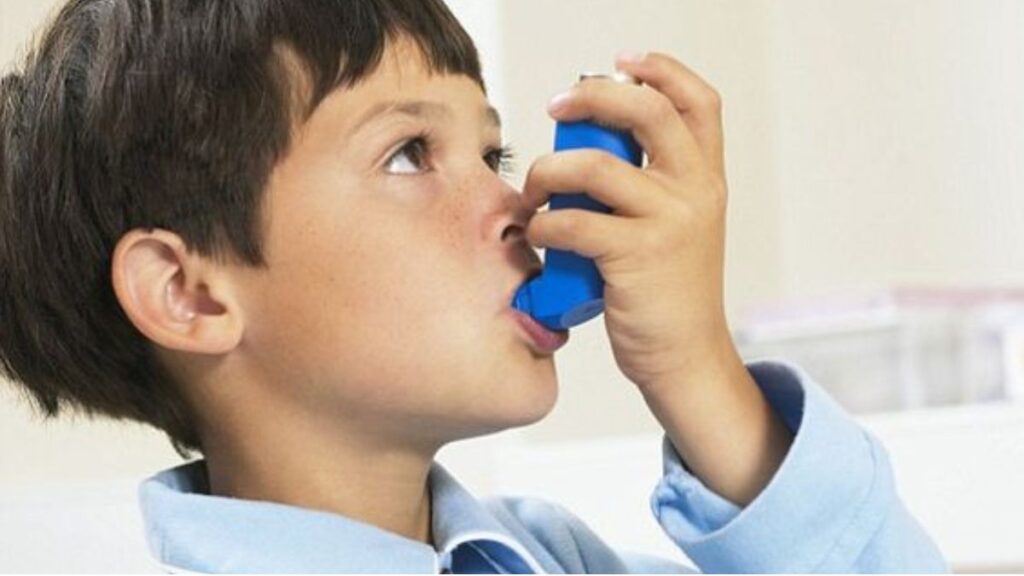
The Severity of Air Pollution in India
Among the many dangers facing our nation, air pollution is one of the most serious. The air quality index (AQI) in many Indian cities is often inferior, either during certain seasons or throughout the year. This leads to common and recurring respiratory issues, affecting children more than adults.
Search
Recent Posts:
- OpenAI Brings ChatGPT to be used in WhatsApp: Here’s How It Works and What You Can Do To Use It.
- Realme 14x 5G: A Budget Smartphone With Premium Features.
- Exploring Apple Genmoji: A New Era of Custom Emoji Creation.
- 2024 United States Presidential Election: Donald Trump Declares Victory in 2024 Presidential Election
- Chancellor Olaf Scholz’s Visit to India: Advancing Indo-German Cooperation on Defense, Trade, and Regional Stability.
Understanding the Severity with Statistics
Studies in India show that about 7% of children aged 6 to 7 years and 13 to 14 years experience wheezing, while 12.5% of younger and 18.6% of older children suffer from nasal symptoms. Allergic conditions like allergic rhinitis are common among Indian children due to environmental and tobacco smoke, seasonal changes, and both outdoor and indoor air pollution.
What is Allergic Rhinitis Fever?
Medical journals describe allergic rhinitis fever as an allergic reaction that causes sneezing, congestion, itchy nose, and watery eyes. In Indian households, this is often mistaken for a common cold and treated the same way because the symptoms overlap. This can be very dangerous.
When allergic rhinitis is not treated correctly, not diagnosed, or wrongly treated with too many antibiotics, it can lead to more problems. Dr. Shalini Tyagi, Dch, MD, DNB (Pediatrics), says respiratory allergies can also lead to sinusitis, which is the swelling of the air-filled spaces in the skull. “Sinusitis causes painful symptoms like facial pain, pressure, coughing, stuffy nose, and runny nose. These symptoms can make adults uncomfortable, but they can be very hard for children. Allergic rhinitis can make the adenoids bigger, causing mouth breathing and trouble sleeping. Often, people with allergic rhinitis develop asthma, a long-term lung disease that causes shortness of breath, wheezing, and frequent hospital visits.”
Therefore, it is important for those with allergies to get diagnosed by a healthcare professional or an allergist to receive the right treatment. This is even more important for children because allergy-related respiratory issues can not only cause lifelong diseases but also impact their physical, mental, cognitive, and overall development.
Identifying and Managing Allergic Rhinitis
Dr. Tyagi emphasizes that parents should recognize allergic reactions distinct from the common cold. Consistent symptoms necessitate a visit to a healthcare professional. Pediatricians can refer parents to allergy specialists for proper tests and specific medication. Timely and accurate diagnosis is vital to prevent future respiratory complications in children.
Causes of Allergic Rhinitis
Many people in India believe that allergies are caused by outdoor dust, pollen, or air pollution. This is why children are considered the most vulnerable as they spend a lot of time playing outdoors. Outdoor allergens like dust, pollen, smoke, perfume, and car exhaust can cause allergic rhinitis. However, Dr. Tyagi says that many indoor allergens such as dust mites, pet dander, animal hair or fur, and molds can also cause severe respiratory allergic reactions. “The key is to pinpoint the exact triggers of one’s allergies and take preventive or precautionary actions..”
Impact of Allergic Rhinitis on Children
Allergic rhinitis or other respiratory issues caused by allergens can greatly affect a child’s quality of life. It is common in Indian households for children to miss school a few days after it reopens due to the ‘common cold.’ However, many healthcare professionals say that it is the seasonal transition and various allergens that cause allergic rhinitis, with its cold-like symptoms, that make children fall sick and miss school. It affects their daily life as well as their physical and mental well-being.
Dr. Tyagi adds that in more severe cases, undiagnosed or misdiagnosed allergic rhinitis can cause significant sleep disturbance. “The discomfort is so severe that even adults wake up feeling sleepy, tired, and irritable. In children, it may cause irritability, restlessness, listlessness, anxiety, and lack of energy.”
Prolonged allergic rhinitis and the resulting tiredness can affect a child’s physical activity in school, as sports and physical education are big parts of the curriculum. This can lead to emotional and mental disturbances in a child. In infants, prolonged or undiagnosed allergic rhinitis has been shown to impair cognition and psychomotor development.
Allergy Medication and Its Effect on Children
Dr. Tyagi states that unfortunately allergic rhinitis is considered a trivial disease in India. “This is a chronic and progressive disease, which can persist throughout childhood and become critical in adulthood. Depending on need, healthcare professionals may prescribe antihistamines or intranasal corticosteroids to patients.”
Antihistamines are commonly prescribed for allergies to adults and children. However, some antihistamines can cause drowsiness which can be detrimental to a child’s learning capabilities and cognition. Children can become listless, low on energy and irritable. Hence, it is important to not self-medicate and reach out to a healthcare professional who can recommend an ideal antihistamine for your child. Nasal congestion is one of the most uncomfortable symptoms of an allergy. It can cause discomfort while sleeping, leading to restlessness and irritability in children. Nasal sprays can offer symptomatic relief in such cases.
Resisting Allergies in Children
Dr. Tyagi suggests strategies to help parents navigate the allergy season. Recognizing the pattern of reactions to identify triggers is important. “Usually dust mites, seasonal pollens, fungal spores, pet dander, or insect sheddings cause allergic rhinitis. However, parents need to track the timing and pattern so that they can let the healthcare professional know. They can then direct the parents to the correct tests and diagnosis.”
Dr. Tyagi affirms that among the many tests available in the market, the Skin Prick Allergy test is the most common to detect allergens causing respiratory distress in children. “Once parents are informed about the specific allergen, the healthcare professional can not only prescribe the appropriate medication for the children but also guide the parents on restrictive measures to mitigate the allergen’s impact. Indoor dust mites are one of the most common allergens in our country. A healthcare professional can easily direct parents in controlling that.”
While humidifiers and HEPA filters are considered good ways to protect children from airborne allergens, it is not practical for every household. Indoor dust mites are usually found in our beds. Regular bedsheet changing, drying them in the sun, wet mopping of floors, keeping children away from furry toys or soft toys, etc., can help a great deal. Dr. Tyagi adds that if your children experience reactions, various traditional methods can help alleviate some discomfort. “incorporating traditional practices such as jalneeti or nasal washes regularly, taking steam and drinking warm water with a touch of ginger can offer relief.”
Though ingesting food can not cause allergic rhinitis, some food coloring or preservatives can induce respiratory distress. “Once you identify such a pattern, it is important to keep your children away from such foods,” adds Dr. Tyagi. “Ultimately, the most effective way to fight allergies is by maintaining a strong immune system. Keeping it robust through a balanced and healthy diet, sufficient sleep, and regular exercise is imperative. Studies have shown that breastfed children, children exposed to animals from a young age, children born via vaginal delivery, etc., have better immunity and thereby less allergic reactions.” affirms Dr. Tyagi.
Conclusion
We live in a world where air pollution is a harsh reality. Even with utmost care, it is nearly impossible to protect children from allergies. It is crucial not to ignore symptoms such as sneezing, a runny nose, or a blocked nose that might be triggered by exposure to specific allergens in both children and adults. It is important to track these symptoms and consult a healthcare professional at the earliest opportunity. By ensuring the right balance of recognition, information, diagnosis, treatment, and therapy along with a healthy diet, maintaining hygienic habits, and scheduling regular health checkups, we can give children a better quality of life despite their allergies.
To read more topics, please visit: https://insightfulbharat.com






